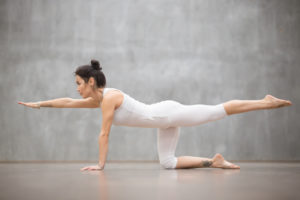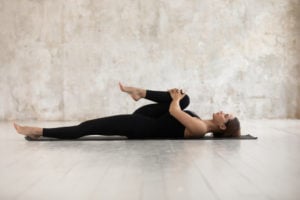‘Slow Motion’, Mindfull bewegingsinstructies voor de fysiotherapeut gebaseerd op Tai Chi
Overzicht
Welkom op deze gratis digitale cursus waarin wij nieuwe technieken ter bevordering van ontspanning aanbieden genaamd Slow Motion. Wij zijn Bas Hoendervangers, Annette van Rossem, Shoi-lan Mok en Lennert Muileboom (van links naar rechts).
Deze gratis syllabus (inclusief beeldmateriaal) is gecreëerd in het kader van de afstudeerprojecten van de opleiding Fysiotherapie aan de Fontys Paramedische Hogeschool Eindhoven. Wij hebben met veel plezier gewerkt aan Slow Motion. We hopen dat deze nieuwe technieken ter bevordering van ontspanning een verrijking zijn voor het vak Fysiotherapie. De syllabus en het beeldmateriaal is tot stand gekomen in samenwerking met Peter van Burken van PsychFysio opleidingen en Bart Saris, een ervaren Tai chi leraar (zie www.wutaichionline).
Met uw medewerking kunnen we dit gratis product verder verbeteren
De huidige versie is een testversie. Als u dit product uitprobeert en uw ervaringen met ons deelt dan kunnen wij op basis van uw bevindingen de cursus bijstellen. Een kwaliteitsverbetering die prettig is voor u, voor andere fysiotherapeuten en voor onze patiënten. Als u dit deze cursus wilt evalueren klik dan hier: cursus evaluatie
Inleiding
Er bestaat veel onduidelijkheid over Tai Chi en de effecten hiervan. Voor velen is de gedachte erachter teveel gericht op de oosterse filosofieën. Door middel van deze syllabus wilden wij Tai Chi toegankelijk maken voor een groter publiek. Fysiotherapeuten zijn goed in staat de technieken te leren en deze over te brengen aan hun patiënten. In deze syllabus zijn echter alleen basistechnieken opgenomen en wil dus niet zeggen dat fysiotherapeuten, die deze syllabus hebben doorgenomen, Tai Chi leraar genoemd kunnen worden. Het is een goede aanvulling op de huidige ontspanningstechnieken, het is echter een heel klein deel uit de technieken van Tai Chi.
Leeswijzer
In het eerste hoofdstuk wordt kort ingegaan op de geschiedenis van Tai Chi, wat Tai Chi inhoudt en welke verschillende vormen er bestaan. Om een idee te krijgen wat Tai Chi betekent, is enige kennis van deze onderwerpen noodzakelijk.
In het tweede hoofdstuk wordt een brug geslagen naar de westerse wereld. Hierin wordt beschreven op welke manier westerlingen kijken naar bewegen, en hoe dit verschilt ten opzichte van de oosterse visie.
Het derde hoofdstuk beschrijft de verschillende indicaties waarbij Tai Chi gebruikt kan worden. Al deze indicaties zijn evidence based.
Het laatste hoofdstuk geeft een herhaling van motorische leertheorieën en welke bij Tai Chi het meest geschikt is. Hiernaast bevat dit hoofdstuk ook aanwijzingen die horen bij het beeldmateriaal. Om uw kennis te testen na het lezen van deze syllabus, is er op de site een zelftoets te vinden.
Bij de ontwikkeling van deze syllabus hebben wij verschillende literatuurbronnen gebruikt. Deze zijn opgenomen in de literatuurlijst.
Disclaimer
Het gebruik of (doen) toepassen van informatie uit deze syllabus is volledig voor de verantwoordelijkheid en het risico van de gebruiker. De auteurs sluiten elke aansprakelijkheid uit voor eventuele schade, directe en indirecte, uit welken hoofde dan ook ontstaan, voortvloeiende uit of verband houdende met het gebruik van of (doen) toepassen van informatie, producten of diensten die worden aangeboden via deze syllabus. Gebruikers worden aangeraden om medische vragen, klachten of symptomen tijdig voor te leggen aan de behandelende arts of andere zorgprofessional ten einde professioneel onderzoek, diagnostiek en mogelijk medische zorg te ontvangen. Gebruikers wordt geadviseerd om voorafgaand aan het uitvoeren van de oefeningen uw huisarts te bezoeken.
Literatuurlijst gebruikt bij deze cursus
Abbott, R.B., Hui, K.K., Hays, R. D., Li, M.D., Pan, T. (2006). A Randomized Controlled Trial of Tai Chi for Tension Headaches: A Randomized Controlled Trial. eCAM 4, 107-113.
Bernards, L.N., Bouman, J.A. (2002). Medische fysiologie. Houten: Bohn Stafleu van Loghum
Brouwer, T., Boiten, J.C., Uilenreef-Tobi, F.C. (2003). Diagnostiek in de fysiotherapie. Proces en werkwijze. Tweede druk. Maarssen: Elsevier Gezondheidszorg.
Burgt van der, M., Verhulst, F. (2003). Doen en blijven doen: Voorlichting en compliancebevordering door paramedici. Derde herziene druk. Houten: Bohn Stafleu Van Loghum.
Chang, Y.F., Yang, Y.H., Chen, C.C., Chiang, B.L. (2008). Tai Chi Chuan training improves the pulmonary function of asthmatic children. Journal of Microbiology, Immunology and Infection 41, 88-95.
Davies, K. (2007). Tai-chi. Kerkdriel: Librero b.v.
De Vreede, P., Van Meeteren, M., Samson, M., Verhaar, H. (2006). “Welke training verbetert de ADL van relatief gezonde ouderen?” Stimulus 25, 276-288.
Delecourt, C. (2003). Kunst en beschaving. Brussel: Artis.
Greenspan, A.I., Wolf, S.L., Kelley, M.E., O’Grady, M. (2007). Tai Chi and Perceived Health Status in Older Adults Who Are Transitionally Frail: A Randomized Controlled Trial.Physical Therapy 87, 525-535.
Fiatarone-Singh, M.A. (2004) Exercise and Aging. Clin Geriatr Med. 20: p. 201-21.
Geciteerd in: Hopman-Rock, M., Jongerten, T., de Vreede, P. (2006). Functionele training versus krachttraining bij ouderen. In: Jaarboek Fysiotherapie Kinesitherapie 2006. Houten: Bohn Stafleu van Loghum.
Fox, E.L., Mathews, D.K.(1991). Fysiologie van lichamelijke opvoeding en sport. Derde herziene druk. Lochem: Uitgeversmaatschappij de Tijdstroom BV.
Hagenaars, L.H.A., Bernards, A.T.M., Oostendorp, R.A.B. (2000). Het meerdimensionaal belasting-belastbaarheidsmodel. Amersfoort: Nederlands Paramedisch Instituut.
Hakim, R.M., DiCicco, J., Burke, J., Hoy, T., Roberts, E. (2003). Differences in Balance Related Measures Among Older Adults Participating in Tai Chi, Structured Exercise, or No Exercise. Journal of Geriatric Physical Therapy 27, 13-17.
Hazell, T., Kenno, K., Jakobi, J. (2007). Functional Benefit of Power Training for Older Adults. Journal of aging and Physical Activity 15, 349-359.
Hong, Y., Li, J.X., Robinson, P.D. (2000). Balance control, flexibility, and cardiorespiratory fitness among older Tai Chi practitioners. Br. J. Sports Med 34, 29-34.
Hopman-Rock, M., Jongerten, T., de Vreede, P. (2006). Functionele training versus krachttraining bij ouderen. In: Jaarboek Fysiotherapie Kinesitherapie 2006. Houten: Bohn Stafleu van Loghum.
Houtman, I.L.D., Schlatmann, H.F.P.M.(1991). Fysiologie voor de sportpraktijk. Derde, herziene druk. Lochem: Uitgeversmaatschappij de Tijdstroom BV
Jadad, A.R., Moore, R.A., Carroll, D.(1996). Assessing the Quality of Reports of Randomized Clinical Trials: Is Blinding Necessary? Controlled Clinical Trials 1996, 17, 1-12.
Irwin, M.R., Pike, J.L., Oxman, M.N., Cole, J.C. (2003). Shingles Immunity and Health Functioning in the Elderly: Tai Chi Chih as a Behavioral Treatment. Evidence-based Complementary and Alternative Medicine,1, 824-830.
Klein, P.J., Adams, W.D. (2004). Comprehensive Therapeutic Benefits of Taiji A Critical Review. American Journal of Physical Medicine & Rehabilitation 83, 735-745.
Landers, D. M., Arent, S.M. (2007). Physical activity and mental health. Handbook of sportpsychology. 496-491.
Lee, E.N., Chung, W.T., Lee, M.S. (2007). Tai Chi for Disease Activity and Flexibility in Patients with Ankylosing Spondylitis: A Controlled Clinical Trial. eCAM August 27.
Leent-Loenen van, H.M.J.A. (2008). Bloeddruk samengevat. Volksgezondheid Toekomst Verkenning, Nationaal Kompas Volksgezondheid. Bilthoven: RIVM
Loo van, G. (2002). Tai Chi Chuan. Roeselare: Globe Uitgeverij.
Li, F., Harmer, P., McAuley, E., Fisher, K.J., Duncan, T.E., Duncan S.C. (2001). Tai Chi, Self-Efficacy, and Physical Function in the Elderly. Prevention Science 2, 229-239.
Li, J.X., Hong, Y., Chan, K.M. (2001). Tai chi: physiological characteristics and beneficial effects on health. Br. J. Sports Med 35, 148-156.
Magill, R.A. (2007). Motor Learning and Control. Concepts and applications. Eight edition. New York: The McGraw-Hill Companies, Inc.
McCullagh, P. (1987). Model similarity effects on motor performance. Journal of Sport Psychology, 9, 249-260.
Geciteerd in: Schmidt, R.A., Wrisberg, C.A. (2004) Motor Learning and Performance. A problem-based learning approach.
McGibbon, C.A., Krebs, D.E., Parker, S.W., Scarborough, D.M., Wayne, P.M., Wolf, S.L. (2005). Tai Chi and vestibular rehabilitation improve vestibulopathic gait via different neuromuscular mechanisms: Preliminary report. BMC Neurology 5.
Morree de, J.J., Jongert, M.W.A., Poel van der, G. (2006). Inspanningsfysiologie, oefentherapie en training. Houten: Bohn Stafleu van Loghum.
Naylor, J., Briggs, G. (1963). Effects of task complexity and task organization on the relative efficiency of part and whole practice methods. Journal of Experimental Psychology, 65, 217-244.
Geciteerd in: Magill, R.A. (2007). Motor Learning and Control. Concepts and applications. Eight edition. New York: The McGraw-Hill Companies, Inc.
Norlander, T., Sandlund, E.S. (2000). The Effects of Tai Chi Chuan Relaxation and Exercise on Stress Responses and Well-Being: An Overview of Research. International Journal of Stress Management 7, 139-149.
Yau, M.K., Packer, T.L. (2002). Health and well-being through T’ai Chi: perceptions of older adults in Hong Kong. Leisure Studies 21, 163-178.
Pei, Y.C., Chou, S.W., Lin, P.S., Lin, Y.C., Hsu, T.H.C., Wong, A.M. (2008). Eye-hand coordination of elderly people who practice Tai Chi Chuan. Journal of the Formosan Medical Association 107, 103-110.
Qin, L., Leung, K., Leung, P.C., Au, S., Hung, W., Dambacher, M., Chan, K. (2005). Beneficial effects of regular Tai Chi exercise on musculoskeletal system. J Bone Miner Metab 23.
Robins, J.L.W., Gray, P., Elswick, R.K., Walter, J.M., McDade, E. (2006). Research on psychoneuroimmunology: tai chi as a stress management approach for individuals with HIV disease. Applied Nursing Research 19.
Robinson, R. (2006). Tai Chi voor iedereen. Vianen: House of Books.
Robinson, R. ( 2006) Tai Chi. Oefeningen voor een gezond leven. Kerkdriel: Librero b.v.
Rodríguez, P. L., Santonja, F.M., López-Minarro, P.A., Sainz-de-Barande, P., Yuste, J.L. (2007). Effect of physical education stretching programme on sit-and-reach score in schoolchildren. Science & Sports.
Saris, B. Tai Chi Chuan. Een andere manier van bewegen. http://ww.wutaichionline.nl
Schmidt, R.A., Wrisberg, C.A. (2004). Motor Learning and Performance. A problem-based learning approach. Third Revised Edition. Champaign: Human Kinetics.
Schmidt, R.A., Lee, T.D. (2005). Motor Control and Learning: A Behavorial Emphasis. Fourth Revised Edition. Champaign: Human Kinetics Publishers.
Shea, C.H., Wright, D.L., Wulf, G., Whitacre, C. (2000). Physical and observational practice afford unique learning opportunities. Journal of Motor Behaviour, 32, 27-36.
Geciteerd in: Schmidt, R.A., Wrisberg, C.A. (2004). Motor Learning and Performance. A problem-based learning approach.
Sherman, K.J., Connelly, M.T., Erro, J., Savetsky, J.B., Davis, R.B., Eisenberg, D.M. (2004). Complementary and alternative medical therapies for chronic low back pain: What treatments are patients willing to try? BMC Complementary and Alternative Medicine 4.
Smith, A., Graham, L., Senthinathan, S. (2006). Mindfulness-based cognitive therapy for recurring depression in older people: A qualitative study. Aging & Mental Health, 11, 346-357.
Stevens, J. A. (2005). Falls among older adults—risk factors and prevention strategies. Journal of Safety Research 36.
Stevens, J. A. (2005). Falls among older adults—risk factors and prevention strategies. Journal of Safety Research 36.
Taylor, N. (2008). Know the warning signs of osteoporosis. The Vancouver Sun March 13.
Taylor-Piliae, R.E., Froelicher, E.S. (2004). The Effectiveness of Tai Chi Exercise in Improving Aerobic Capacity A Meta-Analysis. Journal of Cardiovascular Nursing 19, 48-57.
Trudeau, F., Laurencelle, L., Tremblay, L., Rajic, M., Shepard, R.J., 1999. Daily primary school physical education: effects on physical activity during adult life. Medicine and Science in Sports and Exercise 31, 111–117.
Geciteerd in: Østerås, H., Hammer, S. (2006). The effectiveness of a pragmatic worksite physical activity program on maximal oxygen consumption and the physical activity level in healthy people. Journal of Bodywork and Movement therapies, 10, 51-57.
Tsai, J.C., Wang, W.H., Chan P., Lin, L.J., Wang, C.H., Tomlinson, B., Hsieh, M.H., Yang, H.Y., Liu, J.C. (2003). The beneficial effects of Tai Chi Chuan on blood pressure and lipid profile and anxiety status in a randomized controlled trial. Journal of alternative and complementary medicine 9, 747-54.
Verhagen, A.P., Immink, M., van der Meulen, A., Bierma-Zeinstra, S.M.A. (2004). The efficacy of Tai Chi Chuan in older adults:a systematic review. Family Practice 21, 107-113.
Wagner, N., Klüfer, W. (1999). Wu-Stil Tai Chi Chuan. Ma Jiangbao: Die langsame Form. Germany: MACH-ART.
Yeh, G.Y., Wood, M.J., Lorell, B.H., Stevenson, L.W., Eisenberg, D.M., Wayne, P.M., Goldberger, A.L., Davis, R.B., Phillips, R.S. (2004). Effects of Tai Chi Mind-Body Movement Therapy on Functional Status and Exercise Capacity in Patient with Chronic Heart Failure: A Randomized Controlled Trial. The American Journal of Medicine, 4, 541-548.
Yeh, G.Y., Mietus, J.E., Peng, C.K., Phillips, R.S., Davis, R.B., Wayne, P.M., Goldberger, A.L., Thomas, R.J. (2007). Enhancement of sleep stability with Tai Chi exercise in chronic heart failure: Preliminary findings using an ECG-based spectogram method. Sleep Medicine, 6.
Yeh, S., Lin, L.W., Hsiao, C.Y., Wang, P.W., Kuender, D., Yang, K.D. (2007). Tai Chi Chuan Exercise Decreases A1C Levels Along With Increase of Regulatory T-Cells and Decrease of Cytotoxic T-Cell Population in Type 2 Diabetic Patients. Diabetes care 30, 716-718.
Young, D. R., Appel, L. J., Lee, S., Miller, E. R. (1999). The effects of aerobic exercise and Tai Chi on blood pressure in older people: results of a randomized trial. Journal of the American Geriatrics Society, 47, 277–284.
Overige bronnen:
http://www.cholesterol.nl
http://www.gezondvgz.nl
http://www.hunyuan.nl
http://www.shaolinholland.nl
http://www.taichifollowme.com
http://www.wikipedia.nl
http://www.wutaichichuanoost.nl
Wereldgezondheidsorganisatie
Geciteerd in: http://www.gezondheidstest.be/edupakket/FT_pedagogisch_dossier.pdf
Artikel delen:
Zin in een leuke en boeiende cursus?
Kijk dan hier voor inspiratie!
" 3000+ tevreden fysiotherapeuten gingen je voor. "
Nieuwsbrief
Elke twee weken 3 samenvattingen voor fysiotherapeuten. Gratis, al 17 jaar. 6000+ fysiotherapeuten gingen je voor.
Database met 1500+ artikelen
Voorjaar 2023
3 dagen. Start 15 mei 2024. Prijs € 595,-…
3 dagen. Start 7 juni 2024. Prijs € 495,-…
3 dagen. Start 31 mei 2024. Prijs € 595,-…
9 dagen. Start 10 september 2024. Prijs € 1395,-…
8 dagen. Start 12 september 2024. Prijs € 1395,-…
8 dagen. Start 20 september 2024. Prijs € 1395,-…
5 dagen. Data 2025 volgen. Prijs € 995,- Bij…










